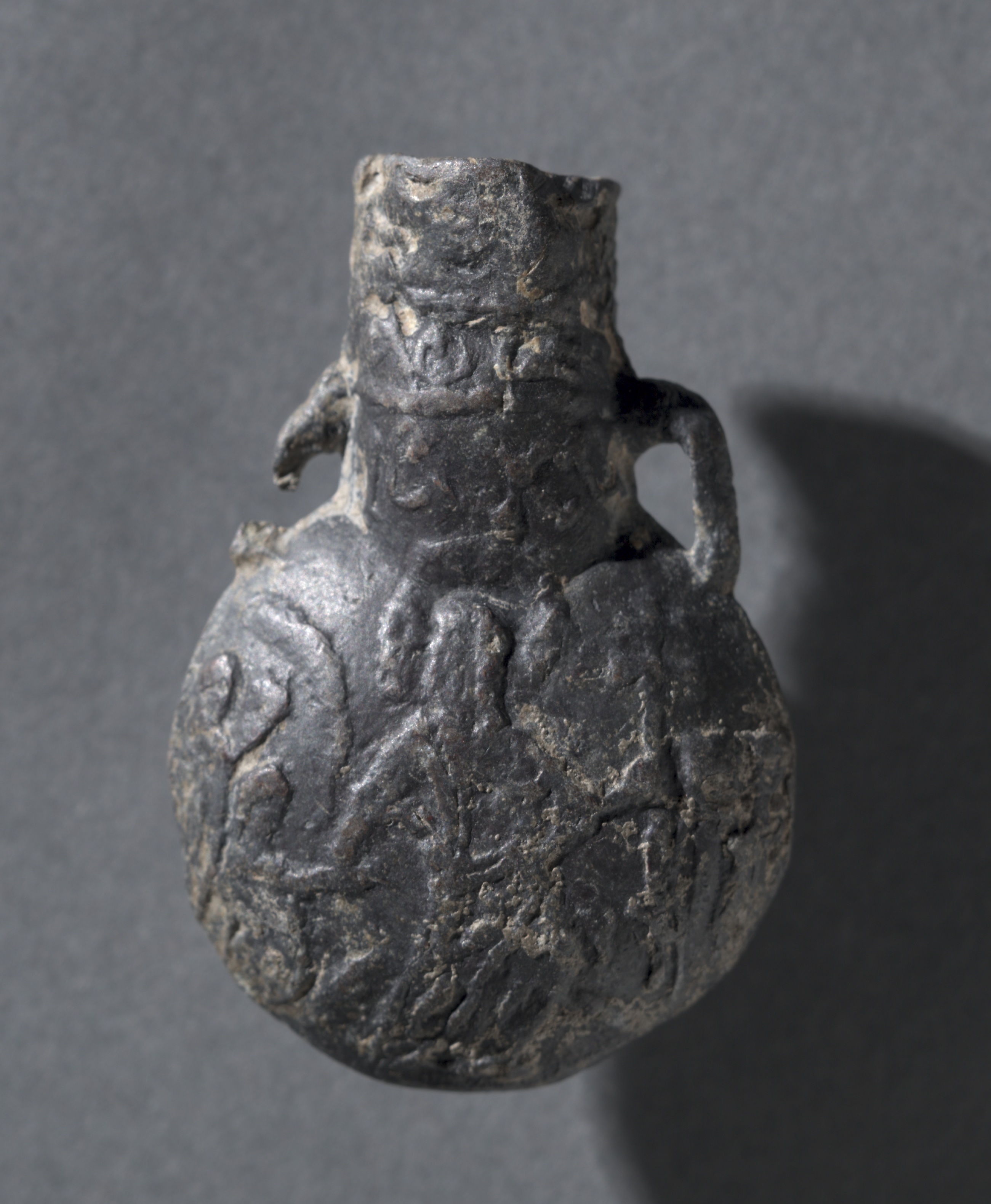The Cleveland Museum of Art
Collection Online as of April 19, 2024

Pilgrim’s Flask
c. 1099–1200
Overall: 4.3 x 2.9 cm (1 11/16 x 1 1/8 in.)
Location: 105 Byzantine
Description
After the Crusader conquest of the Holy Land in 1099, Jerusalem experienced a revival of Christian pilgrimage. During the 12th century, the Church of the Holy Sepulcher was rebuilt, redecorated, and reconsecrated. With the influx of new pilgrims, especially from Western Europe, lead ampullae (small flasks) such as this very rare example were briefly reintroduced. The flask was cast with images of the Church of the Holy Sepulcher and Christ’s Descent into Limbo (Anastasis), establishing a visual connection with the holy sites of Christ’s death and entombment.- Cleveland Museum of Art, “Cleveland Museum of Art Acquires Rare Chinese Paintings, Baroque Porcelain Plaque and Other New Acquisitions Exhibited with Hanging Scrolls,” December 20, 1999, Cleveland Museum of Art Archives. archive.orgBoehm, Barbara Drake and Melanie Holbomb, eds. Jerusalem, 1000-1400: Every People Under Heaven. NY: The Metropolitan Museum of Art, 2016. 25
- {{cite web|title=Pilgrim’s Flask|url=false|author=|year=c. 1099–1200|access-date=19 April 2024|publisher=Cleveland Museum of Art}}
Source URL:
https://www.clevelandart.org/art/1999.234